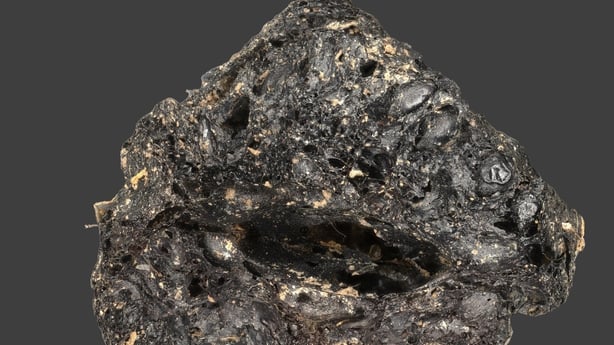A 2,000-year-old fig discovered in north Dublin has been described as the oldest example of an exotic fruit found in Ireland.
It was unearthed from an archaeological excavation at a headland in Drumanagh, near Rush, where an important trading post with the Roman Empire was located and it highlights Ireland's long history of international food trade and a taste for exotic foods.
The discovery of the large, charred fragment of fig fruit shows that food, as well as goods were being imported into Ireland.
Associate Professor Meriel McClatchie, Director of the UCD Ancient Foods research group at UCD School of Archaeology, said: "We did not know until now that they [figs] made it all the way to Ireland.
"Fig seeds dating to as far back as the 13th century have been recovered from excavations of medieval Dublin, Cork and other towns.
"An actual fruit has never been found in Ireland until now, but what is most important about the Drumanagh fig is its antiquity. It is without parallel in Ireland and is by far the oldest example of an exotic fruit found here."
At its height, the Roman Empire ruled much of Europe, and parts of Western Asia and North Africa. Its power did not extend into Ireland, however.
The establishment of extensive trading routes within the Empire allowed Roman cuisine to become widely available, including new herbs and spices, nuts such as almonds, and fruits such as grapes, dates and figs.
Prof McClatchie also said that the discovery of figs in northern Europe is thought to reflect imports from southern Europe, and it is likely that this new Irish discovery travelled a similar distance.
"It’s thrilling to imagine someone enjoying such an exotic food here in Ireland so long ago."

The excavations at Drumanagh have also uncovered evidence for craft and domestic activities, including metal and ceramic objects that originated in Roman Spain, Gaul and Britain, as well as objects that reflect locally based activities.
The site has also yielded the remains of foods eaten there almost 2,000 years ago, which survived because it was burnt, which enabled its preservation.
The presence of significant quantities of spelt wheat - a cereal that was rare in Ireland's past but was a staple of Roman Britain - was also found.
Christine Baker, Heritage Officer/Archaeologist at Fingal County Council, said the excavations have revealed more of the story of those living and working at Drumanagh.
"We now know there was an importation, not just of goods but of lifestyle.
"By these windswept cliffs people were consuming spelt bread, olive oil and figs, drinking from glass vessels and fine ceramic cups while wearing brooches and glass beads.
"The evidence so far points to a connection with the Chester/Wirral area of Roman Britain during the first 200 years of the Roman conquest."

